yeovil at war
Air raid precautions wardens
Later part of 'Civil Defence'
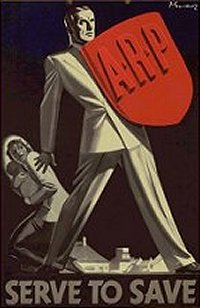 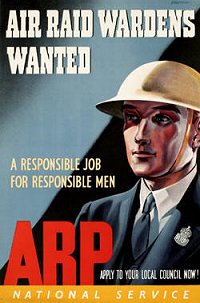 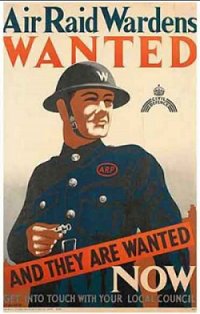 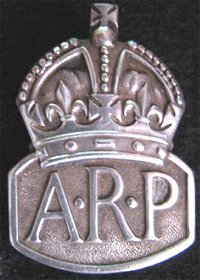 |
In September 1935, local authorities were encouraged to organise Air Raid Precautions (ARP). In April 1937, an Air Raid Warden Service was created and by the middle of 1938 this had some 2,000 recruits. By September 1939 there were more than 1.5 million ARP Wardens nationwide. Women as well as men joined the emergency services as an ARP warden. The ARP was responsible for the issuing of gas masks, pre-fabricated air raid shelters (such as Morrison shelters and Anderson shelters), the upkeep of local public shelters and the maintenance of the blackout. The ARP also helped rescue people after air raids and other attacks, and some women became ARP Ambulance Attendants whose job was to help administer first aid to casualties, search for survivors, and sometimes help recover bodies. At the start of the War, before uniforms had been issued, ARP Wardens wore their own clothes, plus a steel helmet and wellington boots. They also wore a locally produced armband and a silver badge - as in the centre poster at left. The bottom photograph at left is my granddad's hallmarked silver ARP badge - I used to have his steel helmet with the 'W' on it which I wore as a young lad when playing 'war' with my friends in the early 1950's. Later in the War they wore a one-piece boiler suit in dark blue with their steel helmet and wellingtons - as in the lower poster at left. The rubber Wellington boots were worn as protection in case mustard gas was used. Men could wear a woolen serge battledress (waist length jacket and trousers). Women wore a jacket with trousers or a skirt and a battledress blouse and tie. An ARP warden had to carry three electric torches, three whistles, two hand rattles and a bell. Many ARP Wardens were volunteers and had to use their own coupons to get their uniforms. There were around 1.4 million ARP wardens in Britain during the war, almost all unpaid part-time volunteers who also held day-time jobs. Initially, wardens were expected to be on duty three nights a week, but this increased as the bombings grew worse. The Civil Defence Service was a civilian volunteer organisation established by the Home Office in 1935. In 1941 the Civil Defence replaced the pre-existing ARP. The Civil Defence Service from this time onwards included the pre-existing ARP as well as wardens, the Auxiliary Fire Service (AFS), latterly the National Fire Service (NFS), fire watchers, rescue, first aid post, stretcher parties, etc. Members of the
various services
were issued with
service gas
masks and
helmets - often
marked with an
abbreviation of
their specific
role. For
example, W for
Warden, FAP for
First Aid Post,
SP for Stretcher
Party or FG for
Fire Guard. Over
1.9 million
people served
within the CD
and nearly 2,400
lost their lives
to enemy action.
The Civil
Defence Service
was disbanded on
2 May 1945.
|
|
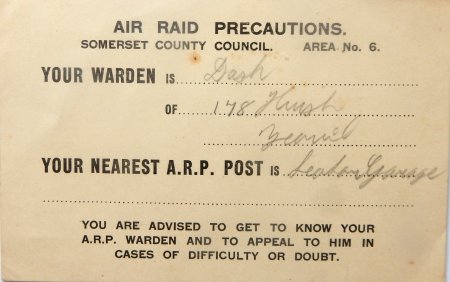
Courtesy of Jack
Sweet
Every household was notified of the name and address of their local ARP warden and their closest ARP Post with a card like this.
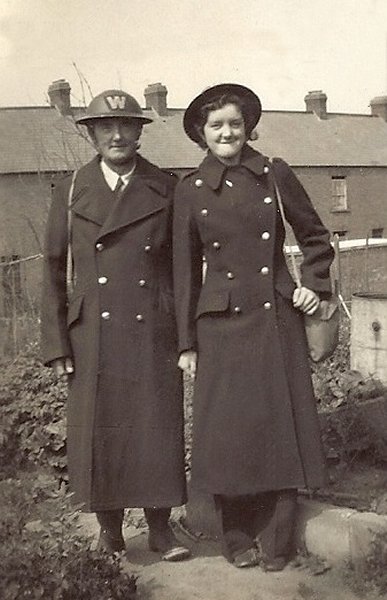
Courtesy of
Chris Priddle
Wilfred A Brooks and his daughter Joyce (Chris's grandfather and mother) photographed in their ARP uniforms on the corner of North Terrace and Grass Royal - not too far from, home since Wilfred was the owner of the Grass Royal fish & chip shop.
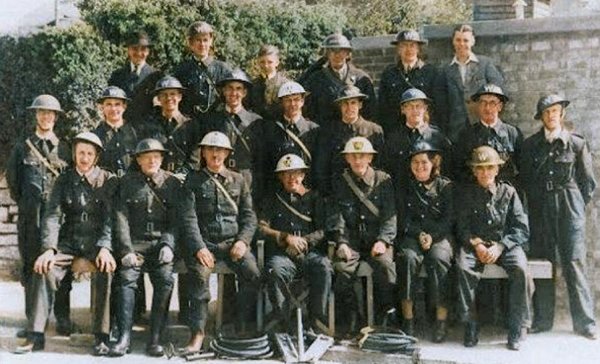
Yeovil Air Raid Wardens of ARP Warden's Post 'K', Highfield Road (see below) pose for a (colourised) photograph. Note the man at extreme right wearing a one-piece issue boiler suit in dark blue and a couple of pairs of Wellington boots being worn in the front row. And only one lady!
The name of just one person in this photo is known - Ernest Harold Waddleton - at top right in civvies. Can you name anyone else?
In Yeovil there were several ARP Warden's posts. Details of the known posts are as follows -
ARP
Warden's Post,
Westfield Hotel,
Stiby Road -
Post C
A
warden's post
for twenty four
wardens,
designated as
Post C, was
established
behind the
garden of the
house in Stiby
Road immediately
north of the
Westfield Hotel.
ARP
Warden's Post 85
Ilchester Road -
Post E
The Old
Cottage,
Ilchester Road,
Yeovil. During
World War 2 a
warden's post
for twelve
wardens was established
here in a
building which
was specially
strengthened for
this role. It
was designated
as Post E.
ARP
Warden's Post,
Queensway Place
- Post G
An ARP
Warden's Post
was established
at
Seaton's
Garage,
Clarence
Street, during
World War Two.
The post was
'Post G'. The
garage no longer
exists, the area
having been
redeveloped.
Warden's
Post, 11
Vicarage Walk -
Post H
A
warden's post
was established
11
Vicarage
Street, Yeovil.
It was
designated as
Post H. It was
adjacent to the
Borough Council
Yard.
ARP
Warden's Post,
Sparrow Road
recreation
ground - Post J
A
warden's post
for twelve
wardens,
designated as
Post J, was
located on the
recreation
ground in
Sparrow Road and
backed onto
gardens in
Goldcroft.
ARP
Warden's Post,
Highfield Road -
Post K
A
warden's post
for eighteen
wardens,
designated as
Post K, was
located on the
western side of
Highfield Road,
just north of King
Street.
ARP
Warden's Post,
adjacent to 125
St Michael's
Avenue - Post L
A
warden's post
for twelve
wardens,
designated as
Post L was
located on land
adjacent to No
125 St Michael's
Avenue.
ARP
Warden's Post,
St Michael's
Avenue - Post M
A
warden's post
for twelve
wardens,
designated as
Post M, was
located on the
western side of
St Michael's
Avenue, about
200 yards south
of the junction
with Mudford
Road.
ARP
Warden's Post,
recreation
ground behind
Rosebery Avenue
- Post O
A
warden's post
for twelve
wardens,
designated as
Post O, was
located in the
recreation
ground entered
from
Rosebery
Avenue opposite
Monmouth Road.
ARP
Warden's Post,
allotments
behind the Royal
Marine PH - Post
P
A
warden's post
for twelve
wardens,
designated as
Post P, was
located on the
right
immediately on
entering the
allotments
behind the
Royal
Marine pub in
Great Western
Terrace. There
is a brick
building at the
site but I'm
pretty sure this
is later.
ARP
Warden's Post,
corner of West
Street and Huish
- Post R
A
warden's post
for twenty four
wardens,
designated as
Post R, was
located on the
western side of
West Street,
close to its
junction with
Huish.
ARP
Warden's Post,
West Coker Road
- Post U
A
warden's post
for twelve
wardens,
designated as
Post U, was
located on the
western side of
West Coker Road,
opposite
Windermere
Close.
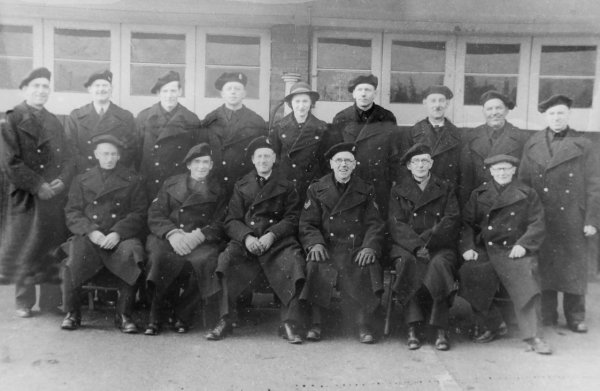
Courtesy of Jack
Sweet
ARP Wardens of Post U, West Coker Road.
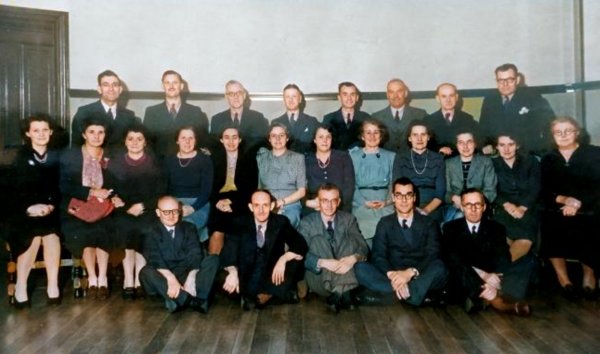
Courtesy of Jack
Sweet
A colourised photograph of an informal gathering of the ARP Wardens of Post U, West Coker Road, and their wives.
Those who are
known are -
Back row: Percy
Atkins (4th in
from left) and
Bert Beale (far
right).
Middle row:
Percy Atkins'
wife (6th from
left) and
Kathleen Beale
née Sartin (4th
in from right).